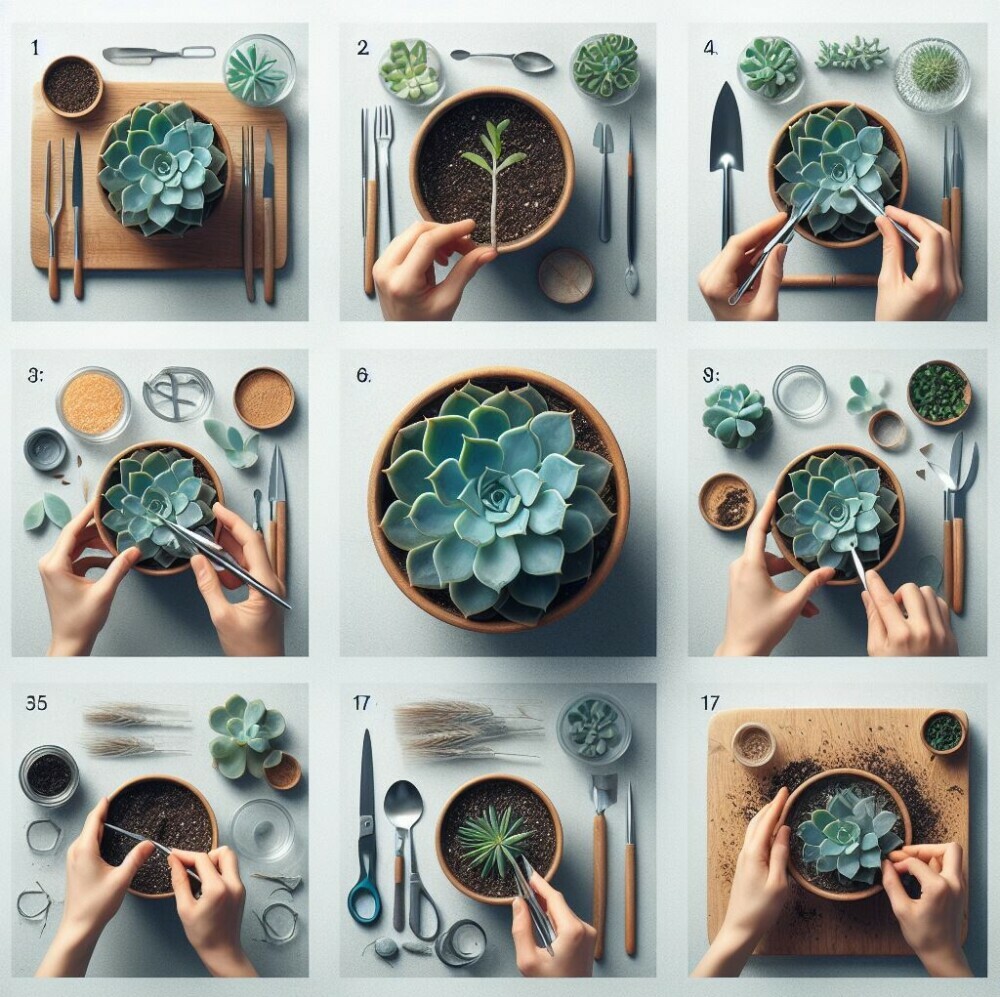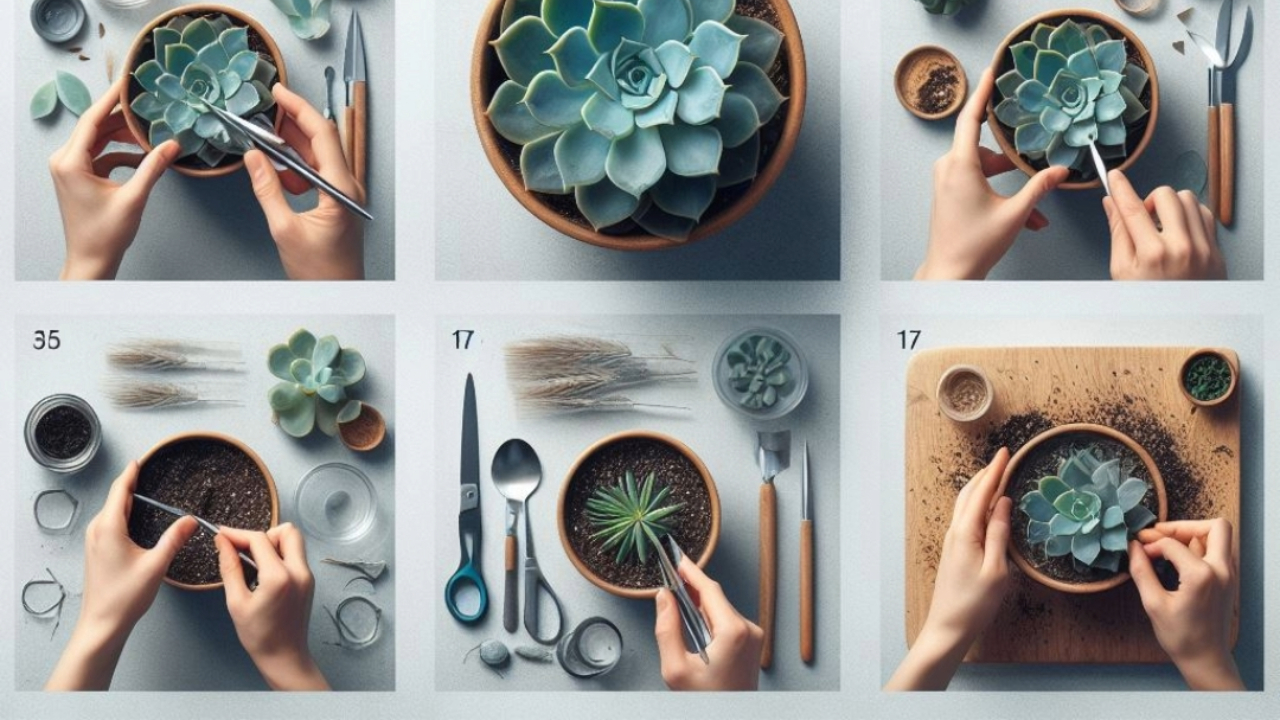
I will kick things off by explaining why you might want to propagate succulents in the first place. There’s something gratifying about watching a new plant grow from a tiny leaf or stem cutting you planted with your own hands. Propagation lets you expand your collection without extra cost, and it’s also a perfect way to share your favorite plants with friends and family.
You’ll learn about the different methods of propagation: leaves, cuttings, offsets, and seeds. Each technique has its quirks and charms, and the choice largely depends on the type of succulent you’re working with and the resources you have at your disposal. Your journey into the world of propagation won’t be a mere experiment; it’s an adventure in gardening that can further your connection with these resilient and diverse plants.
Before you roll up your sleeves and get your hands dirty, settling on the suitable species to propagate is essential. Not all succulents are created equal in their ability to reproduce from cuttings or leaves. It’s also wise to choose the appropriate season since some succulents propagate better at certain times of the year. Lastly, gather the materials you’ll need: a sharp knife or pair of scissors, a pot with drainage holes, succulent or cactus mix, and a sunny spot in your home.
Don’t worry too much about perfection. Propagation is as much an art as a science; sometimes, success comes through trial and error. Choose something that resonates with you, and let’s appreciate the process as much as the result. A lot is happening quickly under those plump leaves and stems, and with patience and the proper care, your efforts will pay off with new growth.
Let’s move on to the next crucial step: propagating succulents from leaves and cuttings. This is where the real fun begins, and I’m here to guide you through each move.
Step-by-Step Guide: Propagating from Leaves and Cuttings
You’ll learn about the fascinating process of turning a single leaf or stem cutting into a full-grown succulent. First up, I’ll walk you through selecting healthy leaves or cuttings. The key here is to opt for plump, unblemished leaves or sturdy, disease-free cuttings. Think of it like choosing the cream of the crop for the best chance of success.
Next, let’s talk about the callusing process. This isn’t just about waiting; it’s crucial for preventing rot and encouraging root growth. You want to let the cut end dry and harden, which typically takes a few days. Place them somewhere bright but out of direct sunlight. It’s like giving your succulent the armor it needs before the battle for new roots.
Once the callus forms, it’s time for proper placement. Lay the leaves on a succulent or cactus mix, ensuring they aren’t buried. With cuttings, you can plant them shallowly in the soil. Don’t worry too much about watering at this phase—misting occasionally is plenty. You’re looking for tiny pink or white roots emerging, a sign your patience is paying off.
Once they’ve developed a robust root system, transplanting young succulents comes later. By now, you’ve got tiny plants ready for their own space. Choose a pot that resonates with you; remember, drainage is non-negotiable. Please place them in their new home and begin a more routine watering schedule. Your first attempt doesn’t need to be your last, so don’t focus too much on perfection. In my opinion, every propagation journey is unique and equally rewarding.
Cultivating New Plants from Offsets and Seeds
So, you’re ready to take on the world of succulent propagation through offsets and seeds. This undertaking might seem daunting, but with the proper guidance, it’s gratifying. Let’s get your green thumb going with some fail-proof strategies for nurturing your baby plants.
Offsets, also known as ‘pups,’ are your succulent’s generous gift to you. These little clones emerge at the base of the parent plant, ready to strike out on their own with a bit of your help. Carefully separate them from the mother plant using a clean, sharp tool and allow them to callus over for a few days before transplanting into a suitable soil mix.
On the other hand, if you’re working with seeds, patience is your best friend. Start by selecting a well-draining soil mix and sprinkle the tiny seeds on top. Covering them with a thin layer of sand or fine grit can prevent them from washing away during watering. Please keep them in a warm spot with plenty of indirect sunlight and maintain a consistent moisture level without overwatering. A mini greenhouse or plastic cover can create a conducive environment for germination.
Now, circling back to the seedlings and offsets’ care regimen, it’s crucial. They need a balanced exposure to light – not too harsh to scorch them but enough to encourage healthy growth. Watering is a delicate dance – too much and their roots may rot, too little, and they won’t establish. Allow the soil to dry out between watering sessions, and when in doubt, lean towards underwatering; your succulents will thank you.
It gets exciting when you start seeing those tiny roots and shoots, but common mistakes can bring your propagation efforts to a standstill. No worries, though; I’ll guide you through avoiding those pitfalls in the next section, ‘Aftercare and Troubleshooting: Ensuring Long-Term Success.’ You’ll also get the scoop on the most common issues people face to make your propagation experience as smooth as possible.
Aftercare and Troubleshooting: Ensuring Long-Term Success
You’ve worked to propagate your succulents, and now it’s all about giving them the proper care to thrive. Your new plants need some extra attention, and that’s precisely what I will help you with. Appropriate water, light, and temperature conditions are essential for newly propagated plants. But remember, succulents are naturally hardy and don’t require constant doting. It’s more about avoiding overwatering and ensuring they get plenty of indirect light.
It’s not uncommon to encounter a few bumps along the road. If your baby succulents aren’t developing roots or you’re noticing signs of rot, don’t panic. Often, these issues are correctable. Adjusting your watering schedule or improving soil drainage are simple fixes that can make a big difference. And if you’re dealing with pests, several organic and gentle treatment options won’t harm your delicate plants.
Sometimes, despite your best efforts, you might encounter persistent issues that aren’t easily solved. That’s where the succulent community comes in handy. Online forums, local gardening clubs, and plant nursery experts can be invaluable resources. And I can’t emphasize enough the importance of leveraging their collective knowledge. After all, social learning is a powerful tool in gardening, just as it is in other aspects of life.
Lastly, enjoy the process! Celebrate each new leaf and root as a victory. Keep a photo journal or share updates on social media. Trust me, both you and your succulent family will have quite the growth journey to look back on. Propagation isn’t just about ending up with more plants. It’s about nurturing a deeper understanding and connection with these resilient little wonders of nature.

